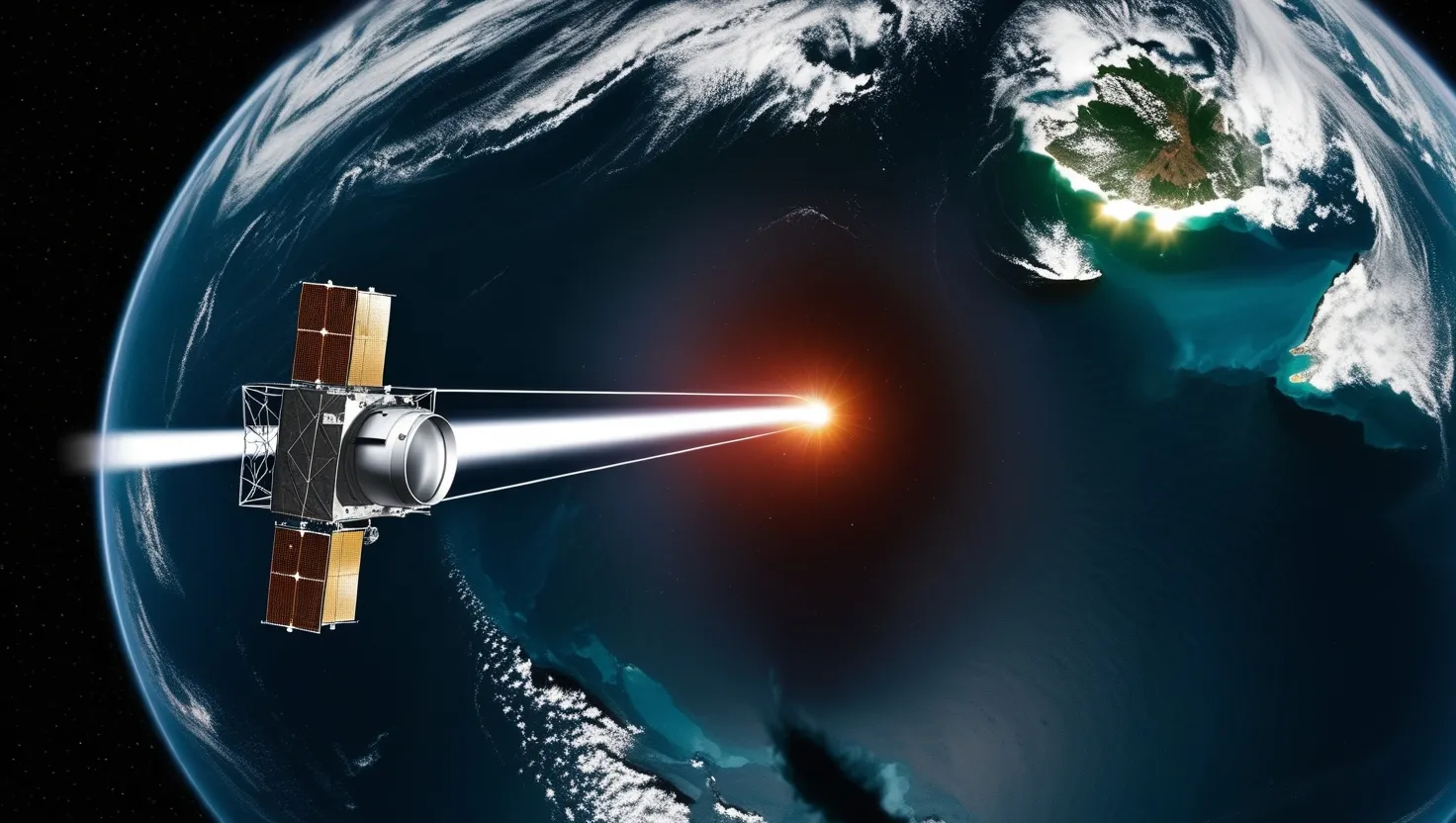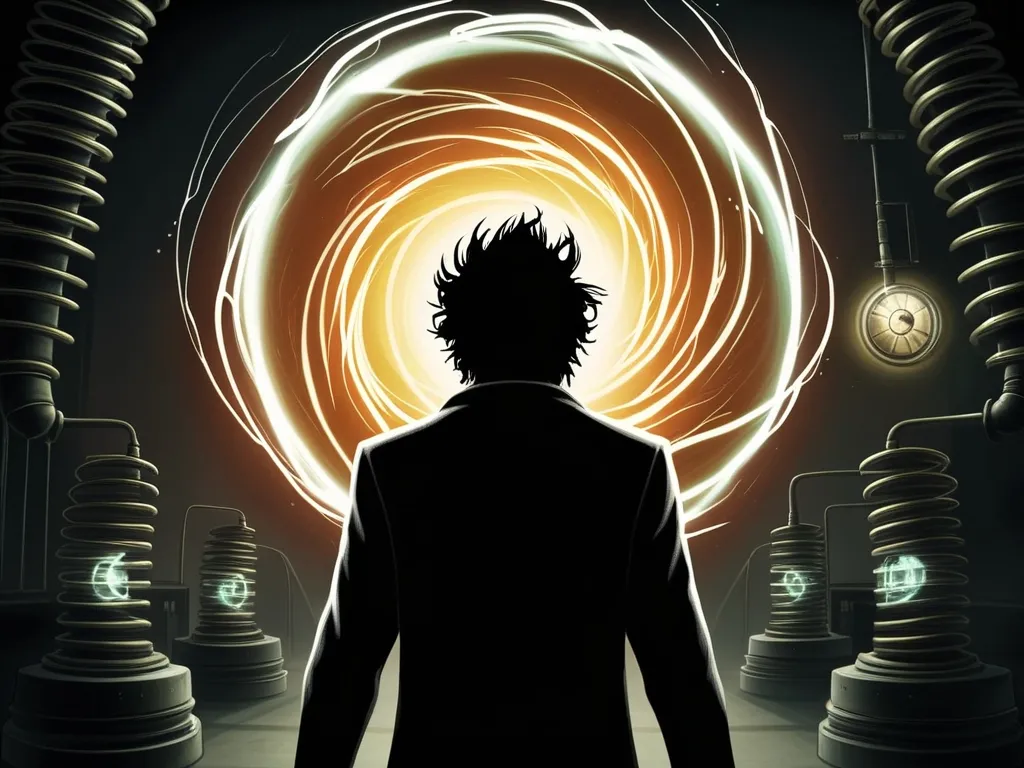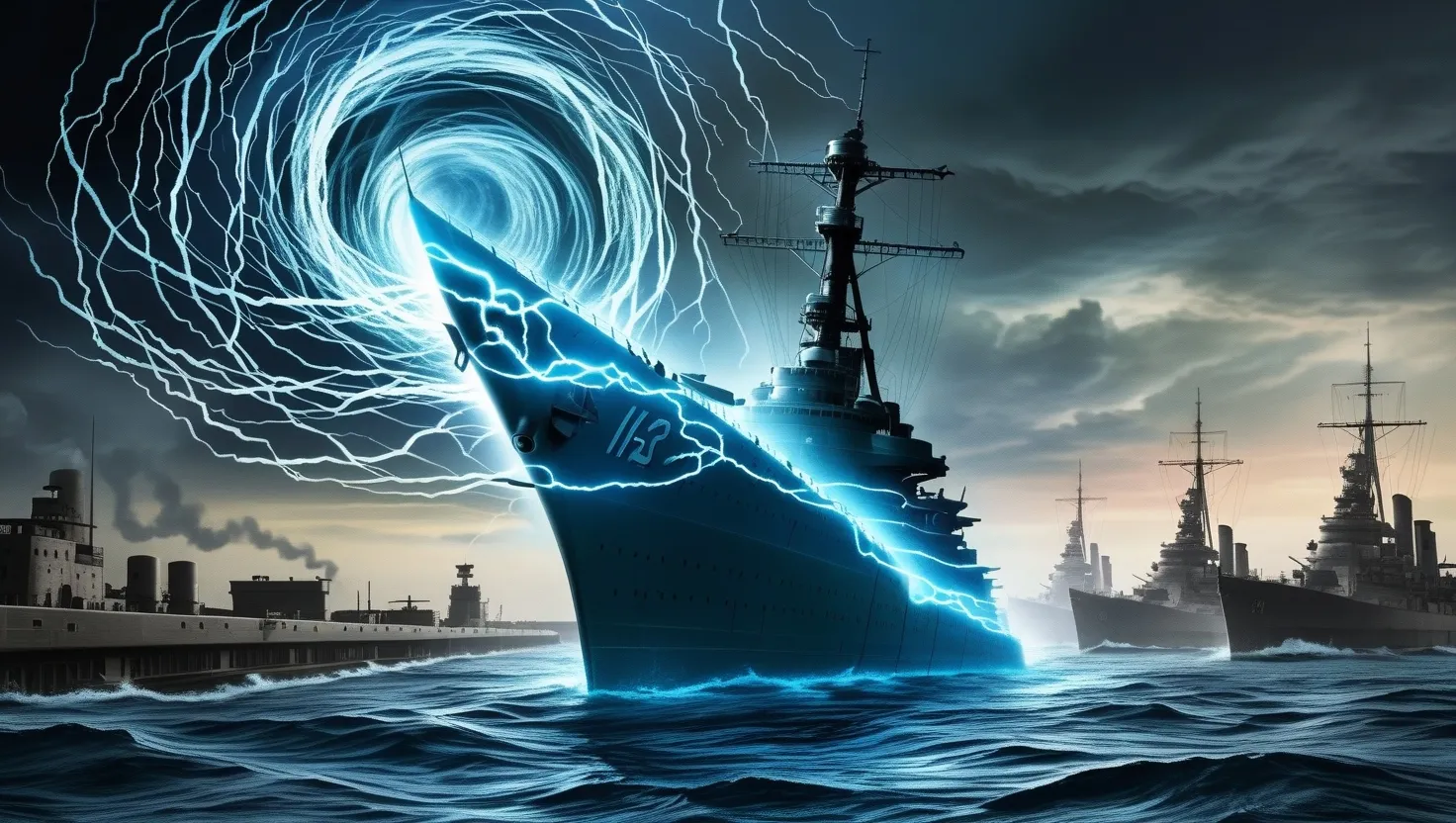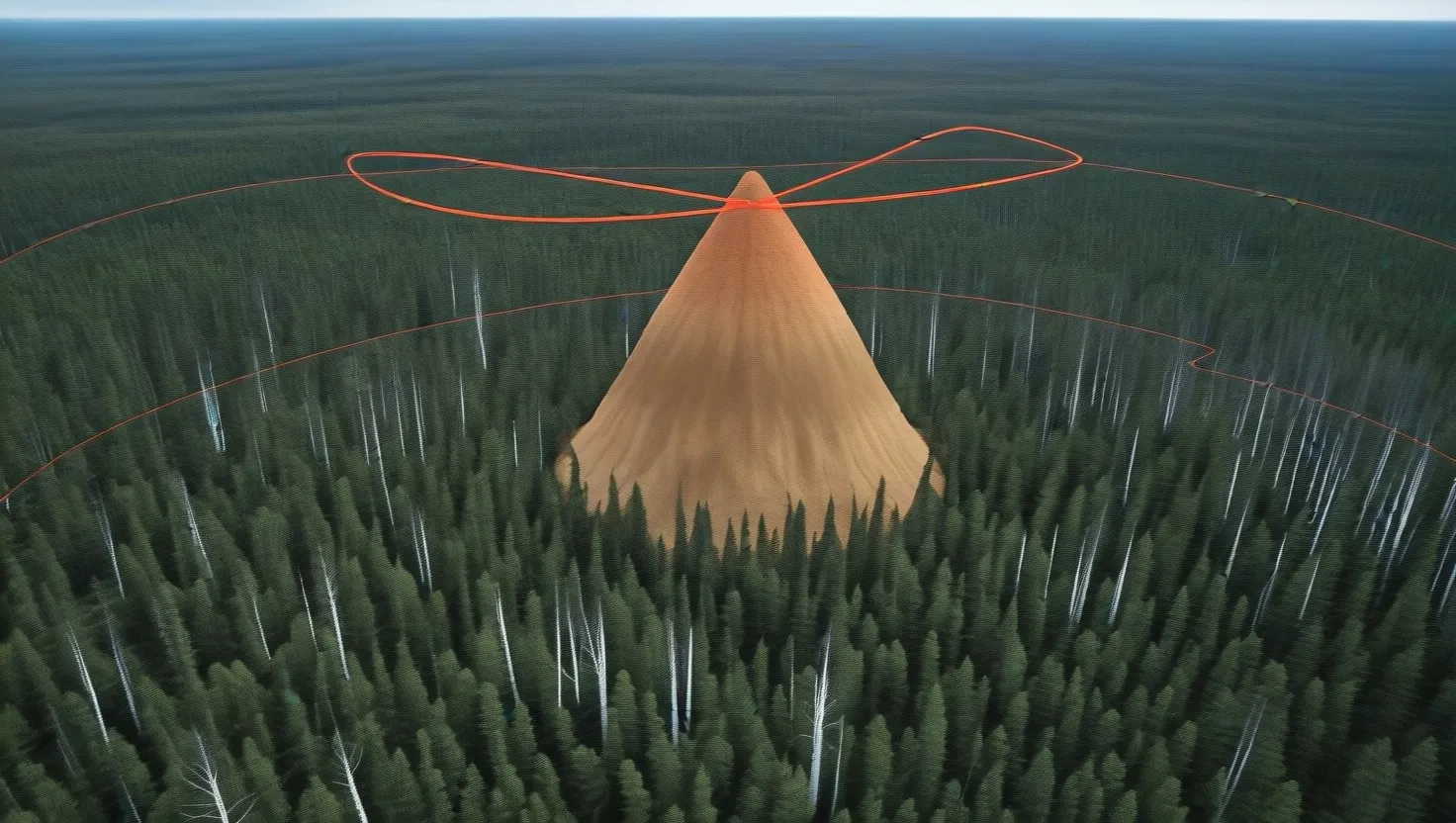Imagine staring into the inky vastness of the Indian Ocean in September 1979. Somewhere out there, in one of the most remote stretches on Earth, a US satellite suddenly picks up a blinding double flash. It’s the kind of signal that in military circles triggers alarms: a double flash is the calling card of a nuclear explosion. But what if the classic indicators don’t all line up? What if the evidence itself tells a story full of contradictions, dead ends, and global intrigue?
The Vela Incident isn’t just a scientific puzzler—it’s a geopolitical thriller where the stakes were as high as possible. One quiet night, the Vela 6911 satellite, orbiting far above, spotted something its instruments knew all too well: two sharp bursts of light milliseconds apart. Previous events like these always meant one thing—someone was testing an atomic bomb. Yet this time, nothing fit perfectly. No country took responsibility, no test site was ever found, and the usual fallout just wasn’t there.
What happened next was a circus of investigation. Intelligence agencies, physicists, and diplomats all scrambled to unravel the truth. Radiation sensors picked up spikes, but not the ones everyone expected. The ratios were off—a deviation from the telltale signature of known nuclear weapons. At the same time, atmospheric sensors on distant islands caught strange waves that also hinted at something big, but not conclusively. Why did the data refuse to fit the standard nuclear template?
Who would have been motivated to stage a secret test? Theories flew. Some pointed the finger at South Africa, a country then suspected of working on atomic weapons. Others whispered of Israel’s rumored partnership and shared facilities. Declassified documents now reveal how the United States quietly fretted over the possibility that allies—using one of Earth’s loneliest locales—were quietly breaking treaties and shaking up the delicate balance of power.
But what about the instruments themselves? Could the Vela satellite, ancient by today’s standards, have simply glitched? After all, it was officially “retired,” running decades-old electronics in harsh space conditions. Meteor strikes on satellites do happen, and some scientists argued that an errant space rock could have fooled the detectors. Others speculated about rare cosmic events—solar flares, lightning storms, even atmospheric “sprites”—leaving behind signals resembling a nuclear test. If you were the engineer trying to explain this, which possibility would seem more plausible?
“The important thing is not to stop questioning. Curiosity has its own reason for existence.” — Albert Einstein
Looking deeper, there’s another layer. The Vela satellite’s sensors were called bhangmeters, designed to look out for nuclear explosions. Every double flash previously recorded by Vela meant an atomic blast. Yet this signal—featured in classified reports with code names like Alert 747—stood alone for more than forty years as possibly anomalous. If it was a bomb, it was a low-yield device, unlike the giant Cold War monsters that devastated entire islands. But how could it disappear so completely, leaving no physical evidence on the surface or debris in the ocean?
Consider the hydroacoustic data: underwater microphones picked up faint ripples minutes after the flash, suggesting something happened above shallow waters near South Africa’s Prince Edward Islands. But the acoustic wave was weaker than what’s expected from an explosion that size. Satellite images provided no signs of scorched earth or abnormal chemical signatures. And yet, atmospheric scientists reported ionospheric waves—the kind caused by giant shocks, not regular weather.
Are you wondering now: is it possible for a country to carry out a nuclear test and leave almost no trace? This is the question that still frustrates arms control experts and nuclear physicists. Some believe the window for detection was selected with extreme care. If you detonated under heavy cloud cover, or during a thunderstorm, light and radiation would be masked. Could the planners have known exactly when satellites would be pointing away—or even trusted that an aged satellite would be ignored altogether?
“The devil is in the details, but so is the solution.” — Henry David Thoreau
The political aftermath rippled well beyond scientific circles. If it was a test, who was responsible? Was it a rogue act or a sanctioned collaboration? Intelligence insiders were divided; bureaucratic turf wars sprang up overnight. Analysts debated whether the incident violated the Limited Test Ban Treaty, which expressly prohibited atmospheric nuclear detonations. If exposed, it could have triggered sanctions or a diplomatic crisis.
And yet, official White House panels dismissed the incident as a “zoo event”—an unexplained natural flash or a technical error. The insistence on ambiguity hints at Cold War caution; no one wanted a new standoff based on incomplete evidence. The phrase “zoo event” itself became famous in intelligence circles—a way to say, “We don’t know, and maybe we don’t want to know.”
Do you trust an official dismissal, or does mystery spark your own skepticism?
“Facts do not cease to exist because they are ignored.” — Aldous Huxley
To this day, powerful figures have voiced strong opinions. Israeli nuclear program defector Mordechai Vanunu stated Israel only achieved advanced nuclear capabilities after 1980, suggesting—if it was a bomb—it was a simple plutonium device, not a sophisticated neutron bomb as sometimes theorized. Others, like Leonard Weiss of Stanford, believe the evidence all but confirms an Israeli-South African joint test. Meanwhile, classified sections of official reports have never been released. What do those hidden pages hold?
Let’s take an unconventional angle: the cosmic collision theory. The double flash might have been a meteorite strike against the satellite itself, not Earth. While rare, such hits can trigger bright short pulses on sensors. But the pattern—two quick bursts resembling the photon release of a nuclear blast—is hard to duplicate with space debris or natural phenomena. If cosmic collisions could produce such signals, why had Vela never recorded one before among the dozens of other events?
Technology itself often sits at the center of big mysteries. Satellites that spend years in space become vulnerable to electronic surges, radiation, and mechanical failures. If you’ve ever wondered whether complex systems can misread signals, you’re not alone—engineers spend careers second-guessing their own devices.
This leads to an even more interesting question: does our reliance on specialized technology sometimes create opportunities for plausible deniability? When evidence depends on a single aging machine, shifting blame becomes much easier. Would modern satellites with advanced cross-checks solve this mystery, or would they simply complicate the story with even more data and potential false positives?
“Whoever controls the media, controls the mind.” — Jim Morrison
As the years pass, the Vela Incident remains unique. There have been no repeat events, no similar flashes detected in the same way, and no country has ever voluntarily confessed to a secret test at sea. Meanwhile, books and articles keep digging, speculating, and debating. For researchers, it’s a case that refuses resolution—a blend of spy novel suspense, scientific rigor, and bureaucratic frustration.
At its core, the Vela Incident raises larger, more philosophical questions. How much do governments know but remain silent about? When global security is at risk, can secrecy ever be justified? Is it better to leave some questions unanswered if the truth threatens peace or alliances?
Let me ask you: if you were the investigator tasked with closing this file, would you be satisfied with ambiguity, or would you demand answers no matter the cost?
The case invites us to rethink how much confidence we place in technology, institutions, and official statements. Perhaps the greatest lesson is that history often turns on tiny details—an odd flash, a stray reading, a forgotten old satellite humming away in orbit. In a world bristling with sensors and data, ambiguity survives, hiding within the folds of our most sophisticated machines and our most guarded secrets.
“Truth is ever to be found in simplicity, and not in the multiplicity and confusion of things.” — Isaac Newton
So, the Vela Incident endures—not just as a scientific puzzle, but as a reminder that, in an era of high-stakes watching and waiting, even the best eyes in the sky can only tell us so much. The rest is a challenge to our curiosity, our skepticism, and our desire to know what really happened that night in 1979. Would you draw a line under mystery, or let the story evolve as a spark for future investigations?






